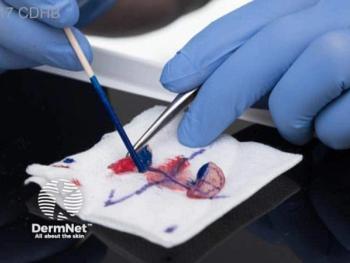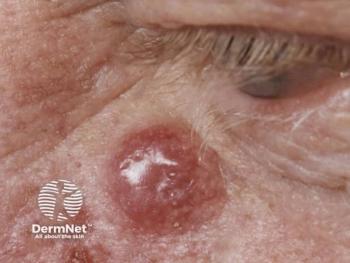
- Dermatology Times, September 2018 (Vol. 39, No. 9)
- Volume 39
- Issue 9
Skin cancer occurrence after solid organ transplant
Solid organ transplant recipients experience an average of two cutaneous squamous cell carcinomas following their transplant.
Recipients of solid organ transplants experience an average of 2.6 cutaneous squamous cell carcinomas (cSCCs) during the 7 years after transplant. The latency between the first and second posttransplant cSCC varies widely, found investigators from Duke University, Durham, N.C.
In their retrospective study that spanned 11 years, data from 143 renal, hepatic, and cardiothoracic adult transplant patients at Duke Medical Center who experienced a postttransplant cSCC were reviewed. Mean age at transplantation was 59.3 years. Of the 143 patients, the mean number of cSCCs was 2.6 over a mean follow-up of 7.2 years.
Twenty patients (14.0%) experienced their second cSCC within 6 months of their initial posttransplant cSCC. The renal group experienced a mean of 3.0 cSCCs compared with a mean of 2.4 in the hepatic group and 2.6 in the cardiothoracic group (P=0.60). Slightly more than half (n=76; 52.8%) experienced 2 or more cSCCs, with a mean latency time between the first and second cSCC of 1.9 years.
The patients who had only 1 cSCC had greater exposure to voriconazole (P<0.001) and mycophenolate (P<0.001) than those who developed at least 2 cSCCs, whereas those who developed at least 2 cSCCs had greater exposure to azathioprine (P=0.003).
Morbidity and mortality are worse in the patients with transplant-associated cSCC compared with the general population without curative systemic treatment options for disseminated disease, the authors noted.
They wrote, “It is difficult to predict which solid organ transplant recipients will experience a second primary cSCC following transplant. Therefore, ongoing vigilance with frequent dermatologic surveillance beyond the first 2 to 3 years after the initial posttransplant cSSC diagnosis should be considered owing to the increased risk in this population.”
REFERENCCE
Charles J. Puza, BA; Adela R. Cardones, MD; Paul J. Mosca, MD, PhD, MBA. “Timing and number of cutaneous squamous cell carcinomas in transplant recipients,” JAMA Dermatology. 2018;154(6):727-728. doi:10.1001/jamadermatol.2018.0856.
Articles in this issue
over 7 years ago
Spironolactone as effective as antibioticsover 7 years ago
Psychological stress as acne causeover 7 years ago
Technology: A private practice’s best friendover 7 years ago
Lack of standardization?over 7 years ago
Update: Immunotherapy for melanomaover 7 years ago
A new treatment for seborrheic keratosis examinedover 7 years ago
Hidradenitis suppurativa and Crohn’s disease linkover 7 years ago
Clinical trials recruiting: Molluscum contagiousumover 7 years ago
Psoriasis lotion seeks FDA approvalNewsletter
Like what you’re reading? Subscribe to Dermatology Times for weekly updates on therapies, innovations, and real-world practice tips.


















